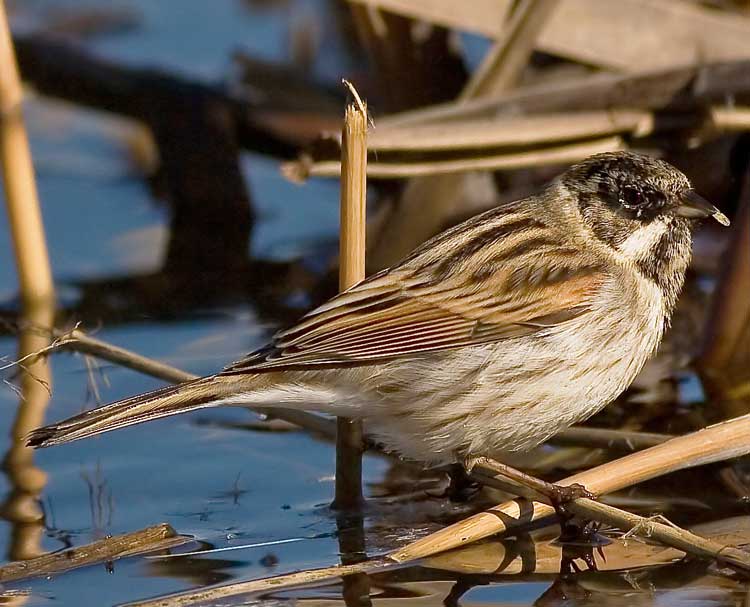Emberiza schoeniclus (*) Cladus: Eukaryota Name Emberiza schoeniclus (Linnaeus, 1758) Vernacular names Syst. Nat. ed.10 p.182 The Reed Bunting, Emberiza schoeniclus, is a passerine bird in the bunting family Emberizidae, a group now separated by most modern authors from the finches, Fringillidae. It breeds across Europe and much of temperate and northern Asia. Most birds migrate south in winter, but those in the milder south and west of the range are resident. It is common in reedbeds and also breeds in drier open areas such as moorland and cultivation. The familiar, if somewhat monotonous, song of the cock is a repetitive zrip.
The Reed Bunting is a medium sized bird, 13.5-15.5 cm long, with a small but sturdy seed-eater's bill. The male has a black head and throat, white neck collar and underparts, and a heavily streaked brown back. The female is much duller, with a streaked brown head, and is more streaked below. Food and feeding Its natural food consists of insects when feeding young, and otherwise seeds. The nest is in a bush or reed tussock. 4-7 eggs are laid, which show the hair-like markings characteristic of those of buntings.
* BirdLife International (2004). Emberiza schoeniclus. 2006. IUCN Red List of Threatened Species. IUCN 2006. www.iucnredlist.org. Retrieved on 12 May 2006. Database entry includes justification for why this species is of least concern Source: Wikipedia , Wikispecies: All text is available under the terms of the GNU Free Documentation License |
|

